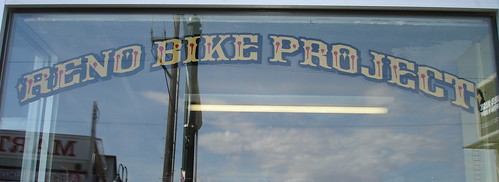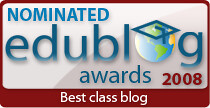A funny thing happened over the summer. My students became sixth graders! (and that can’t be good!) ; ) As we began the year and broke out the laptops I saw things happening that I didn’t like. Nothing horrendous mind you, but students checking their blogs before going straight to whatever they were really supposed to be doing. Or the student I “caught” on Club Penguin as I wandered the room. The student doesn’t even have a Club Penguin account, was just checking it out. So not exactly dangerous stuff, but the fact that they were wandering and off task hit my teacher radar … what else might be happening I’m not aware of? Especially at home or friends’ houses where many parents work odd hours and aren’t necessarily aware of safety issues on the net.
But what really grabbed my attention as we began an online safety program called “7 Random Facts“, which is powerful in its simplicity. I’m not sure how each teacher involved prepared their students, but we talked about not disclosing information about yourself through your blog, even in little snippets that alone are not dangerous, but if someone “mined” your blog they might put a lot of nuggets together and find more than you realize. My students have had a great time deciding what 7 facts they would reveal about themselves and then searching the blogs of other participants to find out who might have similar interests and leave comments for them.
One day during a discussion about online safety – Myspace, Bebo and Facebook came up. It came out how many of my students have those kinds of pages (they are 11 and 12 years old) a bit over half my students have pages that they are too young to have according to the sites own rules. This revelation caused me to expand our online safety unit. In my research on the topic I used Twitter to ask the “Ed Tech Network” for resources. Through that act I made connections with several other teachers having similar issues with their students.
About a year ago we were involved in a Skype video-conference with George Mayo’s class, and he contacted me about having our students write more about online safety and continue the conversation through their blogs. I jumped at the chance and the next thing we knew we had set up a video-conference to share what we were learning. George imbed a YouTube video on online safety on his student blog. Both classes watched it and wrote about their reactions to it.
George and I then had a Skype planning session and we designed a project on Google Docs where each group of students in our classes wrote vignettes describing someone being unsafe on the internet. Then they stated the rule that should have been followed. I had my students figure out how to take a photo that illustrated their rule which we put on on Flickr account and then pulled into the Google Docs.

During the video-conference our students took turns sharing their vignettes and George’s students asked my students questions about our climate, favorite teams, and other topics. The video-conference was great when it was working, but because of a major network issue my school district was experiencing (which I only found out about afterwards) we were on and off a lot. I’ve done probably 100 video-conferences in my classroom and have only had similar issues a few times.
The upshot is that I had a conference with a student and parent the next day and the student mentioned that since our safety unit she had purged her Myspace page of several pieces of info that could lead to her. By-the-way her mother knows all about her page, she monitors it and uses it herself to talk to relatives in Guatemala and elsewhere. I realize that although that is great news, we will need to continue this conversation all year.
One consideration … half of my class has been blogging, making wikis, video-conferencing and more for 3 years now. Next year in middle school they will have only scattered access to technology and probably little to no teaching about being safe online. Of course why worry about students that will begin their teenage years. By that age they know how to take care of themselves.Â
Learning is messy!



